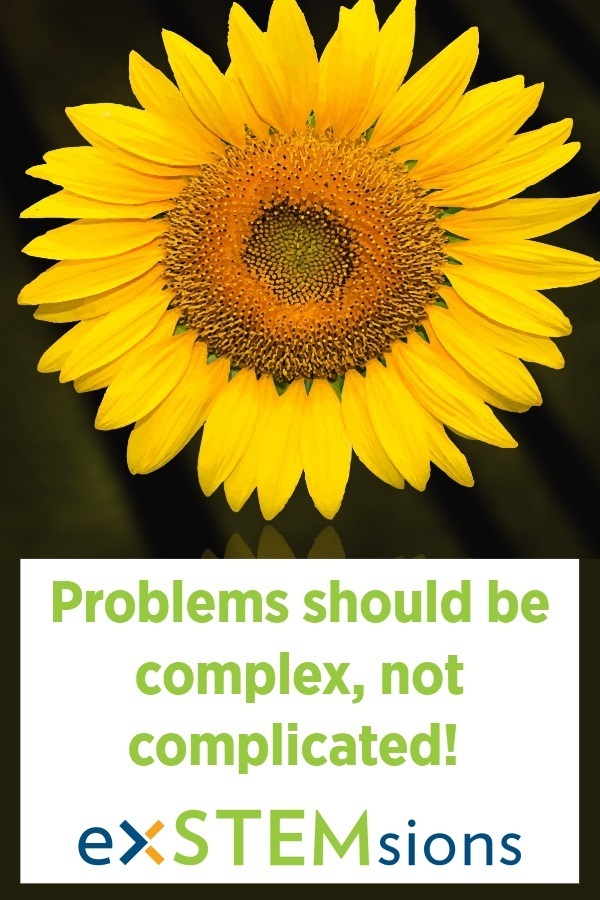Math Should be Complex, not Complicated

Complex and complicated aren't the same thing!
I once worked with a colleague who explained something in a meeting that has stuck with me for many years after hearing it. We were describing a learning tool that we wanted to use with students, and someone mentioned that it all just felt too complicated for a child to use. My colleague then asked a wonderful question: “Does it feel complicated, or does it feel complex?” He went on to explain that, to him, complicated tasks were confusing and hard to complete (just like they sound), but complex tasks used simple steps to communicate big ideas. This is a distinction that has been with me ever since, and something I think about often. As an example, take a look at the beginning of this week’s problem:
Two local schools, one with all boys and the other with all girls, decide to work together to renovate a neighborhood playground. One Saturday, a group of students from each school meet at the playground to begin the work. Since the schools aren’t too far apart, many of the boys and girls present are friends with each other.
In particular, each boy is friends with exactly two girls, and each girl is friends with exactly two boys. There are 20 boys.
1. How many girls are there? Why?

A complex, but not complicated, problem
To me, this problem is a perfect example of a complex problem, but one that isn’t complicated. We can all relate to the story being told in the problem, and can easily picture the situation where these two groups of children need to work together. Maybe the given information in the problem is a little weird, but the setting is familiar to us. In other words, this is not a complicated story - we can all form a mental image of exactly what’s happening. But, as it turns out, when you begin to work your way towards the answer, underneath this uncomplicated story is some really complex, and powerful, mathematics. Somehow, this story about children working together to rebuild a playground turns out to be about something called graph theory. Graph theory is not only super cool (because it makes beautiful pictures!) but it’s also incredibly useful (you can read more about graph theory, and its many applications, here). This problem gets into all sorts of interesting and important concepts in graph theory, but because of the context, it doesn’t feel like you are drowning in new terminology, or being overwhelmed by disconnected ideas. The simplicity of the story allows the problem to slowly develop these concepts without having to beat the solver over the head with them - they appear as you need them, building up to the big ideas through relatable and accessible baby steps. When you learn like this, things just… make sense!
Great learning happens through great problems just like this one. It’s also why simple stories like parables, or fables, get carried from generation to generation - the ideas in such stories are complex, but the stories themselves aren’t complicated.
For full access to the rest of the problem, and the solution, subscribe to exSTEMsions today. You’ll get a wide range of complex, but not complicated, conundrums that foster deep learning, that you and your children can actually relate to! You can also purchase problems one at a time (including the problem used in this blog, called Volunteers) through our store on Teachers Pay Teachers here.
Or, if you want (free!) tips and a mini-challenge, all designed to help you build vital problem-solving and critical thinking skills in your child, click here to sign up for our monthly newsletter!



